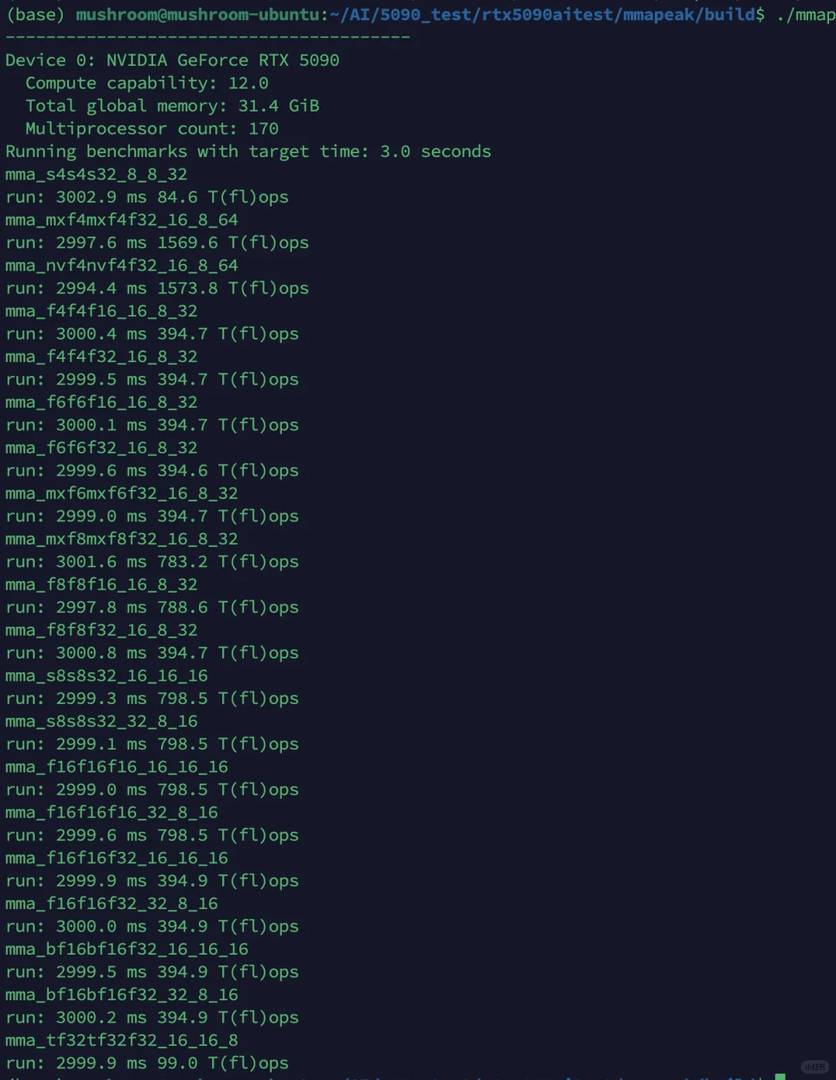I conducted a head-to-head comparison with Mobulan, a renowned Bilibili tech influencer, using mmapeak—an open-source benchmarking tool designed to measure GPU matrix multiplication and accumulation (MMA) peak performance. Our tests ran under identical conditions (Ubuntu 24.04, CUDA 12.8). For additional benchmark data, check out the comprehensive NGA forum analysis by user sahalaka linked below.

The results speak volumes: As Figures 1 and 2 clearly demonstrate, the 5090 outperformed its 5090D counterpart by a staggering 70%+ in select mixed-precision and FP8 benchmarks. This dramatic leap highlights the 5090’s superior computational muscle for specialized matrix operations.

That said, I’d still caution domestic users against purchasing the 5090 (warranty concerns remain problematic), even for AI professionals. In real-world applications, you’d be hard-pressed to spot performance differences—especially in industry-standard FP32 and FP16 operations where both GPUs deliver comparable results. Gaming and professional applications? They’re practically neck-and-neck.
Benchmarking tool: mmapeak (GitHub) – kudos to the developer
Shoutout to Mobulan on Bilibili for the FP32/FP16 comparison tests: BV1JidsYDE2L
Props to sahalaka on NGA for compiling test results (full analysis: tid=43826072)
(PS: Xiaohongshu’s link policy strikes again [facepalm])
That’s a pretty significant difference between the 5090 and 5090D—70%+ is no joke. I wonder how much of that comes down to the design or cooling differences since they share the same core specs otherwise. It’s cool that you used such a specific benchmarking tool to get those numbers too. Definitely food for thought for anyone focused on AI performance in gaming.
That’s a pretty significant difference between the 5090 and 5090D—70%+ is no joke. It makes me wonder how much of that advantage translates into real-world gaming scenarios though. The detailed benchmarks really help clarify things, but I still want to see more comparisons with actual games.
Absolutely, real-world gaming scenarios can sometimes show different results compared to synthetic benchmarks. While the 5090D’s AI performance is impressive, games may not always fully utilize those advantages due to varying optimization levels. I’d love to see more game-specific tests too—it helps gamers like you make informed decisions. Thanks for the insightful comment!
That’s a really interesting comparison! It’s surprising to see such a big gap in AI performance between the 5090 and 5090D, especially since they seem so similar otherwise. I wonder how much of that difference gamers will actually notice in real-world scenarios though. Thanks for breaking it down so clearly!